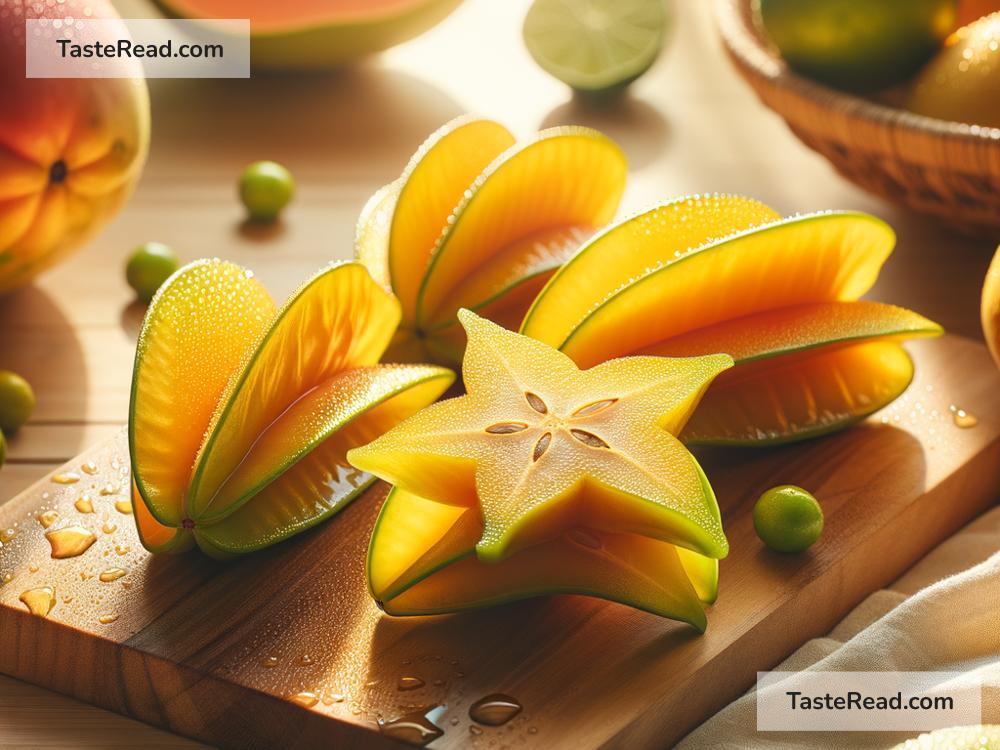Why Fruits Like Starfruit Have a Tangy Yet Mildly Sweet Taste
Fruits come in all shapes, sizes, and flavors, making them a wonderful treat for everyone. Among the many unique fruits that nature has gifted us, one fruit that stands out is the starfruit. With its beautiful star-like shape when sliced and its tangy yet mildly sweet flavor, starfruit is loved by many people around the world. But have you ever wondered what makes starfruit taste the way it does? Let’s explore why fruits like starfruit have this interesting combination of tangy and sweet flavors.
What is Starfruit?
Starfruit, also called carambola, is a tropical fruit that grows in warm climates. It’s native to Southeast Asia but is now cultivated in many parts of the world, including India, the Caribbean, and parts of the United States. When sliced horizontally, the fruit looks like a five-pointed star—hence the name. It has a thin, edible skin and a juicy, translucent flesh.
Starfruit is loved for its distinct taste, which is both tangy and mildly sweet. This flavor makes it incredibly versatile—you can enjoy it raw, use it in salads, or even make juice and desserts with it. But what makes it taste the way it does?
The Role of Acidity in Starfruit’s Tangy Flavor
The tangy taste that you notice in starfruit comes from its natural acids. Most fruits contain organic acids that give them their sharp, sour flavor. In the case of starfruit, the primary acid is oxalic acid. This acid contributes to the fruit’s tangy but refreshing taste.
The level of acidity in a fruit depends on many factors, such as its type, how ripe it is, and where it’s grown. When starfruit is less ripe, the concentration of oxalic acid is higher, making it taste more sour. As the fruit ripens, the acidity level decreases slightly, giving the fruit a more balanced flavor. This is why some starfruits taste tangier while others are milder and sweeter.
The Sweetness Comes from Natural Sugars
Like many fruits, starfruit contains natural sugars, which are responsible for its mild sweetness. These sugars, such as fructose and glucose, develop as the fruit ripens. The process of ripening involves the breakdown of complex carbohydrates into these simpler sugars, which are easier for your taste buds to detect.
When starfruit is fully ripe, the sweetness becomes more noticeable, although it is never overwhelmingly sweet—unlike fruits such as mangoes or bananas. This subtle sweetness pairs perfectly with the tangy flavor provided by the oxalic acid, giving starfruit its unique taste that is both refreshing and enjoyable.
The Perfect Blend: Tangy and Sweet
The combination of tangy and sweet flavors in starfruit creates a delightful balance that appeals to many people. The tangy taste is zesty and sharp, while the mild sweetness softens it, making the fruit pleasant to eat. This balance is one of the reasons why starfruit is often used in savory dishes, beverages, and desserts.
Interestingly, this balance of acidity and sweetness is not exclusive to starfruit. Other fruits, such as pineapples, kiwis, and lemons, also have tangy yet sweet flavors—though each has its own unique level of intensity. What sets starfruit apart is the fact that its taste is generally more subtle, making it adaptable to a variety of culinary uses.
How Ripeness and Variety Affect the Flavor
It’s important to note that the taste of starfruit can vary depending on how ripe it is. Unripe starfruit tends to be more sour and acidic, with less sweetness. As the fruit matures and ripens, the sweetness increases, and the tangy taste becomes less intense. If you’re looking for a milder flavor, you should pick fully ripened starfruit, which often has a golden-yellow color and slightly softer texture.
Additionally, there are different varieties of starfruit, and each one has a slightly different flavor profile. Some starfruit varieties lean more toward the tangy side, while others are naturally sweeter. This variation allows people to choose the type that best suits their taste preference.
Why Starfruit’s Flavor is So Appealing
The unique tangy-yet-mildly-sweet flavor of starfruit makes it a favorite among many fruit lovers. It offers a refreshing experience that is perfect for warm weather, especially when eaten chilled or as part of a tropical fruit salad. The combination of acidity and sweetness also makes starfruit an excellent choice for adding zest and flavor to recipes.
Beyond its taste, starfruit is also rich in vitamins and antioxidants, such as vitamin C, which helps boost the immune system. Its low calorie content and hydrating properties make it a healthy snack that’s both tasty and nutritious.
Conclusion
Starfruit’s tangy yet mildly sweet taste is the result of the perfect combination of organic acids and natural sugars. Acidity provides the fruit’s sharp, zesty flavor, while its natural sugars add a touch of sweetness, creating a unique balance that is both refreshing and delicious. Whether eaten alone or added to recipes, starfruit is a versatile fruit that deserves a spot in your kitchen.
So, the next time you bite into a slice of starfruit, pause to appreciate this amazing balance of flavors—a gift from nature that makes this tropical fruit so special!


